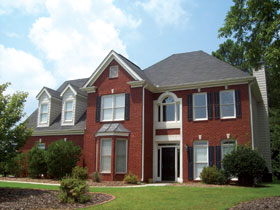

Why do people choose to live on estates? The three primary reasons are aesthetics, a sense of community and security. Marketers and estate agents emphasise the landscaping, the views, the beauty of the homes, the facilities and social status of an estate. This is why more people are moving away from single homes to an estate where there is a grouping of like-minded people who aspire to a type of lifestyle.

However, the greatest driver for purchasing into an estate is becoming security. It is many people’s ultimate dream to be in an environment where you can leave your doors and windows open, your children can be left alone all day to roam freely on the estate and where crime is not a factor. Consumers are willing to pay significantly above the market norm when they perceive an estate to be truly secure.
How realistic is this Utopian ideal? Many developers take shortcuts which are often not evident to would be residents initially. This leaves Home Owner Associations with a legacy of poor security for many years. Often these associations do not have a seasoned security advisor and make poor decisions which perpetuate poor security. It is not only the developers, but often well-meaning committees that allow ineffective security to hold sway. Well-meaning cost-savers are amongst the worst culprits. Lastly, the residents themselves play a role. Many residents believe that because they live on an estate they need to take no accountability for their security. There is also often a sentiment that security rules apply to everybody ‘except for me because I am a special case’.
This begs the question ‘what is a secure estate and how does one go about ensuring your purchase is correct, or if you are a resident already, that your environment is truly secure and safe?’
It is important to understand there is no quick-fix. Security is not a neat parcel you drop on site that functions automatically. It is a complex process with a variety of continuous methodologies that need to be applied. Many estates put in expensive, but inappropriate technology because it is shiny and impressive and easier to understand. Any such environment needs to have clearly defined processes, which are carefully considered and thoroughly cover the broad spectrum of risks prevalent on an estate.
This should be in the form of a roadmap which caters for a journey from the current scenario to the ideal of a fully secure environment. This understanding of the actual state of the estates security is probably the single most important step for an estate. You cannot score a try if you do not know where the try line is.
Once this has been understood, it becomes far simpler to decide how to drive the relevant measures. The type of technology, quantity, seniority and calibre of security staffing, as well as the reality of what is affordable for that estate at that time all become clearer.
Most estates are at different stages of this journey. Some of our estates have large numbers of security staffing because they only have limited technology. Other estates have significant investments in technology and as such need significantly less manpower.
What are some of the key facets to take into consideration when aiming to improve on an estates security or understand how effective it is?
Key factors
The greatest concern for residents is, of course, violent crime. The staggering rise of violent crime on estates is one that has left the estate community reeling. So what measures should be taken? Firstly, violent crime (other than domestic violence) is almost always external. This means criminals need to enter through the gates, or through the perimeter.
Many estates ignore their gates and look to the perimeter first. Securing the perimeter correctly is inevitably far more costly than the gates and should typically be dealt with after effective gate control. Savvy criminals will always scope the estate first, and this is normally done through a variety of means, such as infiltrating staff, posing as visitors, bribing contractors and spending time on site.
However, in almost every instance this means that at some stage they gain access through one of the gates. This naturally implies that tight gate control is the first and most important step to a secure environment. It is not just the actual security, but also the vital principle of deterrence. Key principles are to have effective separately identified controls for contractors, staff, visitors and residents. Nowadays this typically includes handheld scanners for licence discs and driver’s licences, biometrics, turnstiles, rigorous screening and pre enrolment of contractors, and automated visitor pre-clearance systems.
The largest spend on electronics is typically the perimeter. An electric fence is no longer an acceptable form of security on its own. They have become easy to breach and criminals have many ways round them.
As such, a secure environment demands a camera installation. There are other forms of triggering alerts when there are intruders, such as beams, microwave, buried fibre, acoustic triggers, but they do not provide the all-important visual verification. By far the most ideal situation is one where there is an automated trigger alerting a security officer both audibly and visually. This means he can see if the threat is real and can provide information on the nature of the threat, such as whether it is more than one person, with or without weapons.
A camera installation on any perimeter is complex as there are many factors to take into account. These include the ability to see in any lighting and weather conditions, optimal camera distance for viewing efficiency, redundancy in the network, storage and camera, integration into other detection mechanisms such as an electric fence and control room and head end flexibility and setup.
Video analytics
By far the most effective measure is the application of thermal cameras utilising video analytics. On estates under siege by criminals, we have not had a single successful breach on any of the estates’ secured by ourselves since we began applying this technology.
Most of the major estates have now either installed this technology or are looking to do so in the near future. The most important advice in this regard is to use a seasoned integrator who has significant experience with thermals, networks, perimeters and control room environments. There are more examples of poor installations than good ones – and this is a costly exercise.
Once the perimeter is upgraded in this fashion, the manpower complement can reduce significantly. Instead of large numbers of patrolling security staff, one now merely needs to have response teams that go directly to the identified trigger and can deal with the situation effectively because the operator will have informed them as to the number of intruders, weaponry and location. In addition, the perpetrators are typically detected on the outside of the perimeter, allowing significant pre-warning and time to respond.
Other trends
Other trends we are seeing and applying include the need for complex command and control room environments, highly trained and efficient security personnel, open access networks to homes, intruder alarms linked to the on-site control room and the use of off-site remote control rooms.
Internal problems such as managing of contractor movement, syndicates living on estates, insurance fraud and internal disturbances and conflict all need to be managed by a seasoned and disciplined team with good processes and links to the broader community. This is a task that is often beyond traditional guarding and other non-specialised companies.
The recent Hi-Tech Security Solutions Residential Estates Breakfast hosted consultants who really understand and can implement such detailed planning and deployment on estates, and recommend relevant security providers who understand this space. I cannot stress strongly enough the need to contract the best companies in the estate environment that deal with security and safety. Inexperienced companies, in almost every instance, underestimate the nature of the challenge and provide cheaper solutions which seem workable, but don’t meet the required standards. This applies particularly to network criteria, spacing of thermals and grade and calibre of security manpower.
The maturity of the security solution on estates is significant and it is possible to live in a truly secure environment – if a duly considered, carefully planned manpower, process and technology security rollout is implemented. The individual still needs to take accountability for his own safety, but he can do so in an estate that is significantly safer than a private home.
For more information, contact Ian Downie, Xone Integrated Security, +27 (0)21 934 6922, [email protected], www.xone.co.za
| Email: | [email protected] |
| www: | www.xone.co.za |
| Articles: | More information and articles about Xone Integrated Security |

© Technews Publishing (Pty) Ltd. | All Rights Reserved.